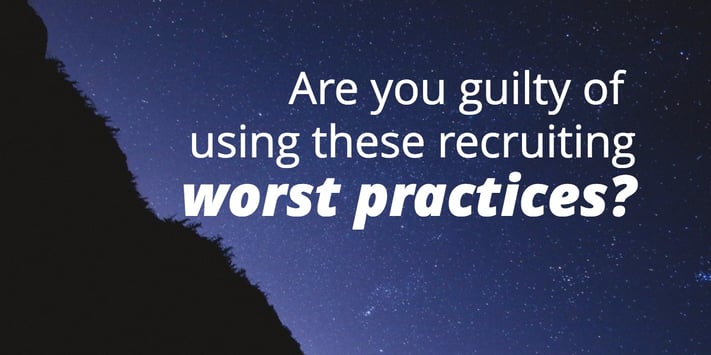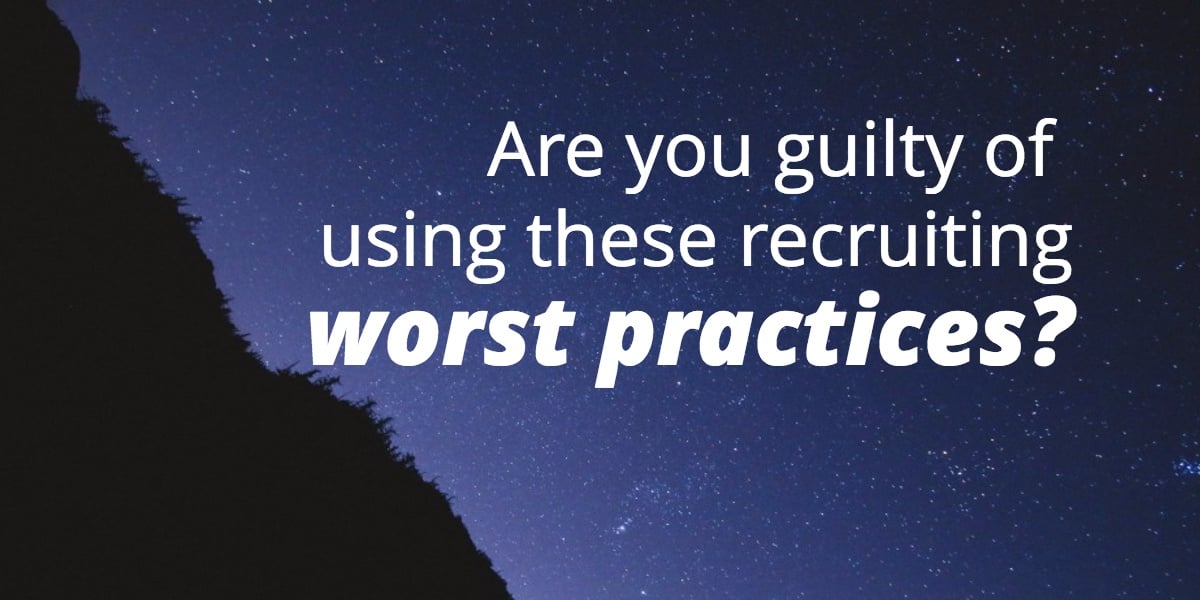
A job application is the first contact many companies will have with potential future employees or, in some cases, customers. That’s one reason it’s so critical to handle the recruiting process with finesse. Bad recruiting experiences negatively impact a brand’s reputation, and can undo goodwill earned by strong products or good customer service.
But some organizations are stuck in the past, repeating the same actions that turn off potentially great employees from applying for other positions or from buying their products in the future. How can you avoid falling into that trap? Take a look at your recruiting and hiring practices for the following worst practices:
Canned auto-responses, or worse, radio silence.
Once a job applicant sends in their resume or fills out your online application, how long does it take for them to hear from someone? One major source of frustration for job seekers is the complete lack of response they get from some companies. An auto-responder email telling applicants that they’ll hear from someone if your company decides to move forward with their application is not a solution to this problem, either.
Nobody likes to wait on the hook without any communication for a long time. If your company is inundated with candidates, you’ll need to put a system in place to let people know when you decide not to move forward with their application. Showing job candidates this kind of courtesy and respect makes it much more likely that they’ll continue to have a positive relationship with your brand. It also means that in the future, if they find another role in your organization that might be a better fit for their skill set, they’re more likely to try again.
Pre-employment tests
Some companies want to ensure that the person they’re interviewing is actually capable of succeeding in the job. This is understandable. However, if this test of abilities takes more than a few minutes to complete, you’re on shaky ground. Asking two or three job candidates to each complete a large problem-solving assignment— especially if you only plan to hire one person for the job— looks like you’re asking people to work for free.
Outdated, cliched interview questions
Every single one of us has likely had to answer questions like “What’s your greatest weakness?” or “Why should we hire you instead of someone else?” Because they’re so overused, every job seeker has a safe answer prepared. Asking these questions won’t give you any insight about abilities or personality. Try asking questions that are more specific to your company’s needs and culture that will actually help you get a good idea of who you’re interviewing and whether they’re a strong fit for the role.
Stretching out the hiring process
The best candidates won’t wait around while you pass them around for ten different interviews. They’ll go with a company that respects their time and skills enough to make a decision in a timely fashion. Work internally to streamline your hiring processes so that only the most crucial decision-makers are involved in second (or third, if absolutely necessary) interviews.
Demanding the 100% perfect fit
If you’re looking for one person who checks every single box on your list of requirements, you’ll probably be waiting a while. In the meantime, you’ll pass on a lot of potentially great employees who could grow into the position. Look for candidates who seem pleasant and professional to work with, and whose skills and experience are at least 80% of what you need. That will allow you to get someone in the role quickly, and fill in the gaps with training until they fit the ideal profile.
Lowballing
Good employees often know what they’re worth, so offering someone a much lower salary as a starting point will do nothing but insult them and make your company look bad. Stay up to date on market rates in your industry and region so that you’re offering competitive pay and attracting the kinds of employees who will help your company grow and reach its goals.
Focusing on improving the candidate experience in your organization will increase the quality of employees you’re able to attract, and bolster your reputation in the industry and among job seekers. As with any element of company culture, overhauling the entire recruiting cycle may take a while, but weeding out these six worst practices is a great place to start.
